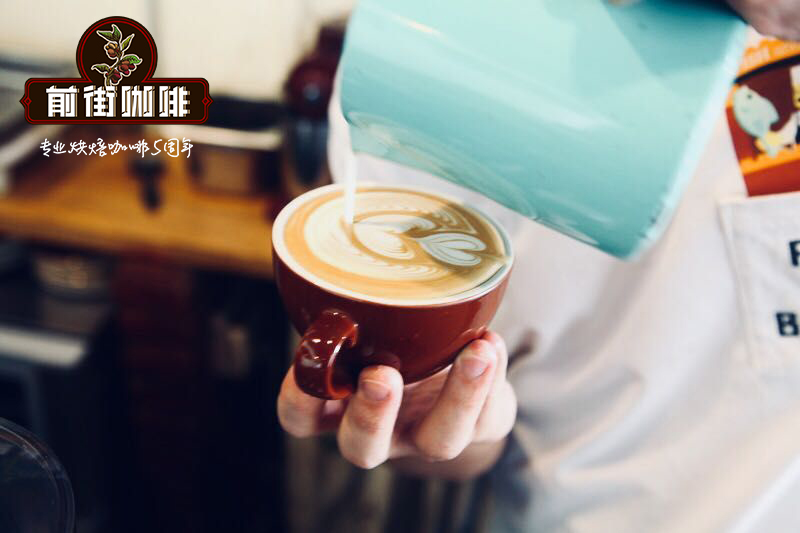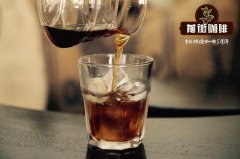Different cups also have an effect on coffee?

For professional baristas, please follow the coffee workshop (Wechat official account cafe_style)
The 56th electronic edition of Food Quality and Preference (Food quality and hobbies) launched in November 2016 contains a study by the University of Oxford on whether the shape of coffee cups affects consumer preferences.
The study included 309 respondents aged 17 to 60 from China, Colombia and the United Kingdom, and asked the subjects to rank 8 coffee cups of different shapes. The statistical results showed that the height and mouth diameter of the cup affected the subjects' expectations of the taste and aroma of the coffee in the cup.
The coffee cup with a wider mouth made the subjects think that the coffee tasted sweeter, while the coffee in the short cup was expected to be more bitter than the coffee in the tall cup. In terms of cultural differences, Chinese people prefer short cups to non-local ones. If compared at the same price, everyone will be more willing to buy a cup with a large capacity.
The authors of the study also said that because subjects saw a wide cup and thought that there should be more milk or water in the cup than in the narrow cup, the coffee was expected to taste sweeter, and so did the short cup, which was expected to contain less milk or water, so it was expected to taste bitter.
In addition, the narrower the cup, it will also make the subjects think that it is more able to retain the aroma of coffee, so the coffee contained in the narrow cup will have a strong expectation of aroma, the researchers concluded. The cup form affects people's expectation of coffee flavor and the price cost they are willing to pay for it, and the relationship between visual information and the expected sensory quality of the product. These related research results are constantly growing and developing.
The diameter and height of the coffee cup may indeed affect the expected aroma, bitterness, and the cost that the buyer is willing to pay for the coffee in the cup. The results show that compared with smaller coffee cups, the larger the diameter of coffee cups is, the sweeter the observers' expectation of coffee taste is; in addition, compared with higher coffee cups, the expected taste of shorter coffee cups may be more bitter.
Putting the same coffee in different color coffee cups will give people the psychological illusion of "different bitterness".
The study examined "whether cup color affects how people feel about coffee flavor". George Van Doorn, a professor of psychology at the Commonwealth University of Australia, poured the same latte into transparent, white and blue cups twice. The results showed that the coffee in the white cup was more concentrated than the transparent cup, while the blue cup felt sweeter than the other two.
Important Notice :
前街咖啡 FrontStreet Coffee has moved to new addredd:
FrontStreet Coffee Address: 315,Donghua East Road,GuangZhou
Tel:020 38364473
- Prev

Yemeni mocha
Yemen, the hometown of mocha coffee, is the first country in the world to produce coffee on a large scale as a crop. Yemeni mocha coffee has distinctive taste characteristics, special taste and varied levels. It has a strong sour taste, a pleasant fruit acidity, and an obvious chocolate flavor. The stronger the coffee is, the easier it is to taste the chocolate. So, now
- Next

How to make ice drop coffee? how to drink ice drop coffee? the method of making coffee beans is the ratio of powder to water.
Professional coffee knowledge exchange more coffee bean information please pay attention to the coffee workshop (Wechat official account cafe_style) hot summer, cold coffee is also one of the summer drinks. When you walk into a coffee shop, have you ever wondered why the price of iced coffee is so much higher than that of ordinary iced coffee? Of course, iced coffee is not just iced coffee with a better name, it is time-consuming to extract.
Related
- Beginners will see the "Coffee pull flower" guide!
- What is the difference between ice blog purified milk and ordinary milk coffee?
- Why is the Philippines the largest producer of crops in Liberia?
- For coffee extraction, should the fine powder be retained?
- How does extracted espresso fill pressed powder? How much strength does it take to press the powder?
- How to make jasmine cold extract coffee? Is the jasmine + latte good?
- Will this little toy really make the coffee taste better? How does Lily Drip affect coffee extraction?
- Will the action of slapping the filter cup also affect coffee extraction?
- What's the difference between powder-to-water ratio and powder-to-liquid ratio?
- What is the Ethiopian local species? What does it have to do with Heirloom native species?

